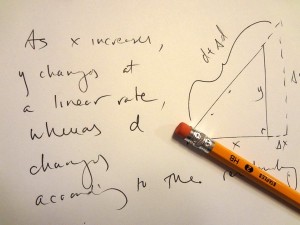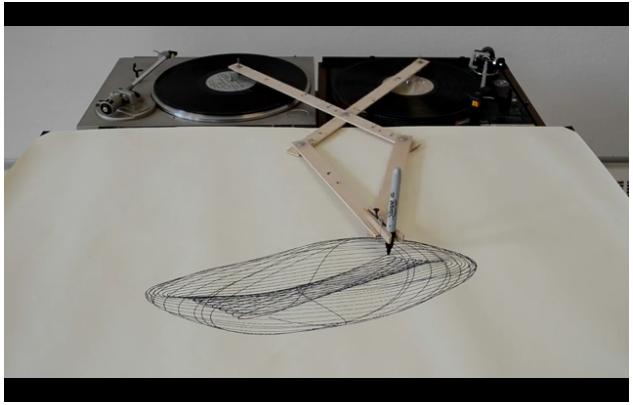 Finding ways to get students to write about mathematics has played a pivotal role in my development and growth as a math teacher. Mathematical writing challenges students to express their ideas clearly and efficiently; it forces students to stop thinking of mathematics as merely equations and answers; and it opens up a new and unexpected dialogue between math teacher and student.
Finding ways to get students to write about mathematics has played a pivotal role in my development and growth as a math teacher. Mathematical writing challenges students to express their ideas clearly and efficiently; it forces students to stop thinking of mathematics as merely equations and answers; and it opens up a new and unexpected dialogue between math teacher and student.
I have always found great value and pleasure in writing. It is a valuable skill, a necessary tool of scholarship, and a powerful creative outlet. And now I see its value as a math teacher. The more my students write, the more useful and interesting we all find it.
In this post, I’ll first address the question “Why Write in Math Class?”.
Why Write in Math Class?
There are infinitely many good reasons to write. I’ll offer three that have been on my mind lately.
1) Writing is a fundamental mathematical skill
Many people might not be aware of it, and many might not admit it, but good writing is a fundamental mathematical skill. A proof isn’t a proof unless others understand it, and that can’t happen if it isn’t written clearly and concisely. Also, it’s great when we find the right answer in a math problem, but as most teachers know, it’s usually more important to understand the problem-solving process than to get the right answer. Good writing skills help narrate and record that process, and make that process available for teachers and peers to understand.
2) Writing is an indispensible professional skill
I’ve had many different jobs in my life, and being a good writer made me more effective at all of them. Whether designing technology systems, meeting with clients or consultants, talking through project specifications, or working on a team, being able to document and communicate effectively about the process gave me an edge. Writing about mathematical ideas and procedures can be hard, but it’s great training for thinking and communicating about the kinds of open-ended problems students will face in the real world.
3) Writing helps me understand my students better
By regularly interacting with my students through writing, I get to know them in a significantly different way than through their work on exams and homework. Through various writing activities, I can develop a better sense of what kinds of math problems they like, what kinds of problem-solving techniques they are most comfortable with, and of course, what kinds of ideas are difficult for them to consume. Getting a different look at how my students think mathematically is incredibly valuable as a teacher, and it can be extremely fun, too! Giving students the chance to think and write creatively about math almost always produces something unexpectedly wonderful!
For more resources, see my Writing in Math Class page.
 What a cool idea: a free software package that simulates a planetarium on your PC!
What a cool idea: a free software package that simulates a planetarium on your PC!


